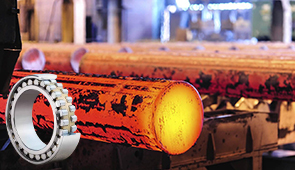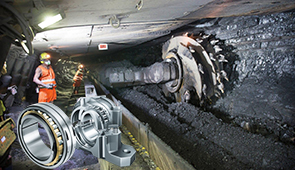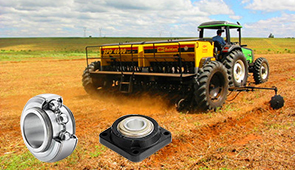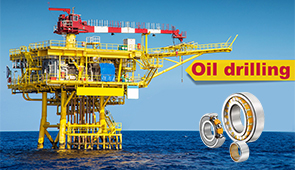How Lubricants Dramatically Reduce Friction and Wear: The Science Behind Smooth Motion
Friction is an inevitable force arising when two surfaces come into contact, leading to energy loss, heat generation, and material wear. Over time, these effects can degrade machinery efficiency, reduce performance, and increase maintenance requirements. Lubricants play a pivotal role in mitigating these challenges by creating a protective layer that minimizes direct surface interaction, reduces energy losses, and prolongs the lifespan of mechanical components. This article explores the scientific principles behind lubrication, detailing how various types of lubricants operate, the mechanisms that enable friction reduction, and the critical role they play in maintaining the smooth motion of modern machinery across industries. By understanding these processes, we can better appreciate how advancements in lubrication technology optimize performance and ensure system reliability.
How do lubricants work to reduce friction between surfaces?

The basic principle of lubrication: separating two surfaces
In short, lubricants reduce the friction between two surfaces in contact by developing a mechanical barrier between them. This barrier effect separates these surfaces to reduce friction and wear. These effects are dependent on the lubricant’s viscosity, pressure-viscosity coefficient, and load-carrying capacity.
- Viscosity: Defines the capacity of the lubricant to flow and of the lubricant to maintain a film between two surfaces. Generally higher viscosity provides better film strength, but can lead to increased internal friction.
- Pressure-Viscosity Coefficient: It is an index of the lubricant’s ability to thicken under the pressure which is necessary to keep separation in highly loaded conditions.
- Load-Carrying Capacity: Indicates the maximum load the lubricant can sustain without allowing surface contact or failure, ensuring system reliability under operational stresses.
By selecting and providing required factors from the lubricant’s properties for the particular application, systems are able to achieve decreased friction, improved durability and increased performance.
The role of viscosity in lubricant effectiveness
In a nutshell, lubrication reduces friction by forming a physical barrier between two moving surfaces. This barrier limits direct interaction, which reduces the frictional force and wear. However, the lubricant’s viscosity, pressure-viscosity coefficient, and load-carrying ability determine how effective these processes are.
- Viscosity: This primarily dictates the lubricant’s ability to flow and maintain a film between surfaces. Generally, higher viscosity results in better film strength, but it may also increase internal friction.
- Pressure-Viscosity Coefficient: This describes the ability of a lubricant to accept a thickening under pressure which is important for high-load condition separations.
- Load-Carrying Capacity: Indicates the highest load that can be supported without permitting surface contact or failure, thereby ensuring system reliability in operational stresses.
The correct selection of the lubricant for the specific application results in reduced friction, increased durability and improved system efficiency.
What are the different mechanisms of lubrication?
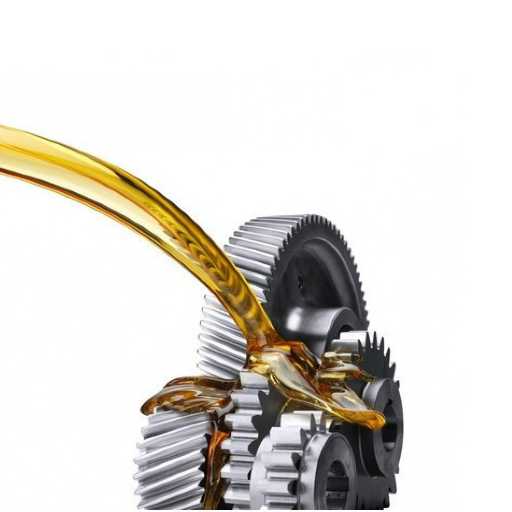
Boundary lubrication: when surfaces come into direct contact
Boundary lubrication takes place when two surfaces in motion are insufficiently separated by a lubricant film, such that the film thickness does not fully cover the surfaces. This commonly occurs during start and shut down cycling or is the outcome of high loads combined with low speeds. The physical and chemical nature of the surface films or additives determines the amount of friction reduction and wear prevention achieved.
- Load (F): Effective boundary additives are crucial due to high normal loads facilitating asperity interaction.
- Coefficient of Friction (µ): Dependent on surface materials and lubricant formulation, the value is 0.05-0.2 when boundary regimes are in place.
- Surface Roughness (Ra): Irregular features on surfaces at the micro-level; smoother ones enhance load distribution.
- Film Thickness (h): Greater than surface roughness, which leads to a lack of hydrodynamic lubrication.
- Additive Efficiency: Contact stress is reduced through the application of anti-wear (AW) and extreme pressure (EP) additives such as ZDDP that coat surfaces and reduce contact stress.
These factors can help a system achieve longer lifespan and better reliability in case of boundary lubrication conditions if well designed lubricants containing boundary-layer additives are applied.
Hydrodynamic lubrication: creating a fluid film
Hydrodynamic lubrication is defined by the separation of two surfaces through a lubricating fluid, which minimizes friction and wear. This lubrication regime functions through fluid mechanisms where the area in contact is kept separate by the pressure within the lubricant due to relative motion.
- Film Thickness (h): Determined by the equation , where is the fluid’s dynamic viscosity, is the relative surface velocity and and is the load applied on the surfaces. Ensuring optimal film thickness is essential to achieve minimal friction and surface contact.
- Viscosity (η): The fluid’s viscosity has a direct influence on the load- bearing capacity along with fluid stiffness. High shear or low speed applications would demand higher viscosity fluid.
- Load (P): The system has to be designed to optimally distribute the load to keep hydrodynamic conditions. If the load becomes excessive over the capacity of the fluid film, the lubrication condition begins to transition to mixed or boundary lubrication.
- Surface Velocity (U): A minimum velocity is critical to generate sufficient hydrodynamic pressure for film formation to stop metal contact.
When system-operating conditions are in line with parameter configurations, efficient hydrodynamic lubrication can be established, resulting in better equipment life and reduced wear of machine parts.
How do lubricants affect the coefficient of friction?
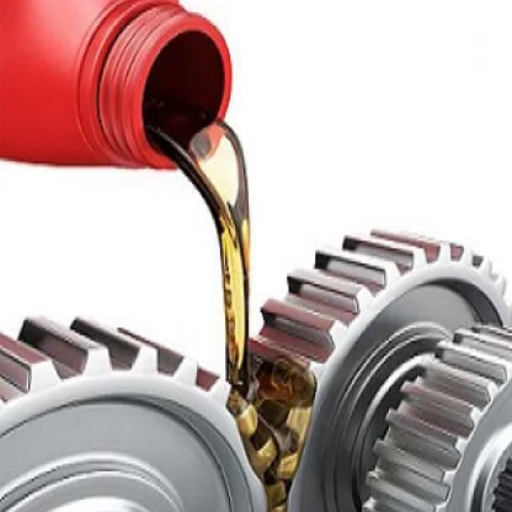
Understanding the coefficient of friction
The resistance two surfaces have when moving against one another, termed the coefficient of friction, is affected by numerous factors. In my opinion, lubricants primarily reduce the coefficient of friction by modifying surface interactions, mostly by forming a lubricating film. This film enables the separation of metal parts, thereby shifting the system from boundary or mixed lubrication phases to hydrodynamic stages.
- Viscosity (η): Lubricants with higher viscosity are able to maintain film strength under different loads and effectively separate surfaces.
- Load (W): A given load becomes a control on the film thickness. Reduced shear forces tend to be achievable only when proper film-building is achieved.
- Surface Roughness (Ra): Smoother curves make it easier for the lubricant to form a complete, uniform film for friction reduction.
- Surface Velocity (U): The greater the degree of relative motion of the surfaces, the greater the hydrodynamic pressure that is developed, contributing toward the achievement of full lubrication using a lubricant film.
Through careful selection of these operating conditions, the lubricant will not only reduce friction but also enhance the durability of mechanical systems and their energy efficiency drastically.
How lubricants lower the coefficient of friction
Lubricants reduce the coefficient of friction due to their ability to form a separating film between surfaces, which reduces direct interaction of asperities. This understanding is subject to various technological factors such as:
- Viscosity (η): Higher viscosity lubricants are thicker and, therefore, are more effective in minimizing contact and friction. Excess viscosity, however, might lead to energy loss.
- Load (P): High loads tend to compress/thin the film. It is important to choose a lubricant with adequate load-bearing capacity so that separation can be maintained under strain.
- Surface Velocity (U): Higher velocities lead to greater hydrodynamic pressure within the film and the lubricant will be forced to transition from boundary to hydrodynamic lubrication.
- Ambient and Operating Temperature (T): A rise in temperature will lower the viscosity of the lubricant leading to a weaker ability to form a stable film which is crucial for its intended purpose. Lubricants must be selected with the working temperature range in mind to maintain performance consistency.
By meticulously managing these factors, lubricants can effectively reduce friction, optimize energy efficiency, and prolong the lifespan of mechanical systems. This approach ensures that both operational reliability and energy conservation are achieved.
What factors influence the effectiveness of a lubricant?
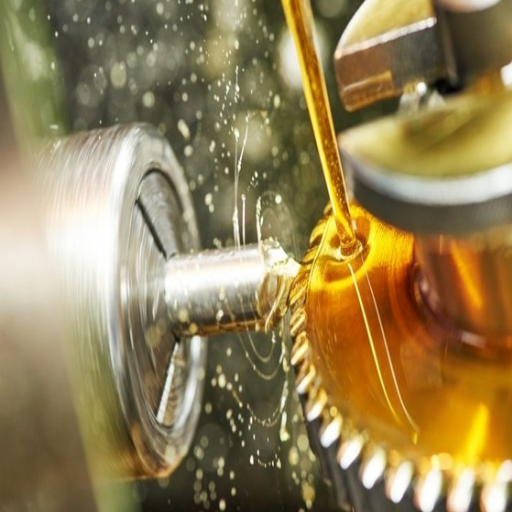
The importance of choosing the right viscosity
When picking the right lubricating oil for a particular purpose, viscosity plays the most crucial role. I know that the formation of a stable lubricant film is secured with the proper viscosity, which is capable of separating interacting surfaces from each other and wear. If the viscosity is too low, the film may separate surfaces, but not efficiently enough, and friction could become a problem and potentially damage surfaces. On the other hand, excessively high viscosity could constitute a drain to energy because of excessive internal resistance work and heating.
- Expected Operating Temperature: Viscosity, as a rule, decreases with temperature increase and is necessary to consider in conjunction with the expected temperature range. As an example, for an environment with great temperature changes, a lubricant witha high Viscosity Index (VI) is more favorable.
- Speed of Operation (RPM) : High RPM machines normally require low viscosity lubricants so that fluid drag is minimized, on the contrary low RPM systems usually require higher viscosity lubricants to preserve film strength.
- Load Conditions: High load conditions require more viscous lubricants to ensure that a protective film can be maintained around the surface in contact and reducing contact between surfaces as much as possible.
- Base Oil Viscosity at 40°C and 100°C: This measurement is vital in determining lubricant of desired performance, which can be verified by viscosity index as well as ascertain in lubricant’s constant temperature relationship.
Employing these technical criteria, it is now possible to explain the lubricant selection in such a way that it meets all of the system performance requirements, avoids excessive wear and tear, enhances energy efficiency, and increases the equipment’s lifespan.
The role of additives in enhancing lubricant performance
Additives are important in the use of lubricants since they improve their physical and chemical properties for optimal use. These additives are developed to solve specific issues within the system. Take, for instance:
- Anti-Wear Additives: These additives create protective films on metals that help reduce wear under high pressures and damage to components during boundary lubrication.
- Viscosity Index Improvers: These additives transform lubricants by keeping the viscosity steady throughout a wide range of temperatures, thereby ensuring successful performance.
- Oxidation Inhibitors: These additives help reduce lubricant oxidation and the resulting sludge and acids, thereby prolonging service life with a reduced risk of corrosion. This improvement makes it possible to operate long intervals between oil changes, which is important for many systems having high operating temperatures.
- Detergents and Dispersants: These additives improve engine cleanliness through neutralization of acidic by-products and suspension of contaminants so that there are no deposits in the high-temperature zones.
By systematically incorporating these additives, I can address challenges specific to the operational environment and justify their use based on technical requirements such as load conditions, temperature ranges, and expected system longevity. This ensures optimal system performance, reduced wear, and extended service intervals, aligning with the overall objective of efficiency and reliability.
Environmental factors affecting lubrication
The performance and reliability of lubrication systems depend heavily on different environmental factors. Corrosion, contamination, humidity, temperature, and other such variables require very careful attention. For example, extreme temperatures may impact the viscosity of lubricants; higher temperatures may lower the viscosity of the lubricant to an extent where the film thickness becomes inadequate, while lower temperatures may cause excessive thickening of the lubricant, which may impede the flow. Secondly, increased humidity results in the risk of water contamination, which degrades the quality of oil and further causes rust or corrosion. Furthermore, dust and debris also introduce particulate contamination, which causes machinery wear, resulting in abrasive interactions.
- Water Contamination Tolerance Levels: Relatively high humidities and presence of water contaminants diluting the lubricants need to be measured with Water Separability tests (ASTM D1401) to gauge the toleration level.
- Temperature Range: Examine operating temperatures and choose correct lubricants with appropriate viscosity indices (example, ISO VG ratings) to ensure maximum fluidity and protection.
- Filtration Requirements: Set filters capable of retaining certain particles cleanliness level (example; ISO 4406 code) to the extent of System’s Sensitive.
Through these factors, I can confidently state that the lubrication system will remain reliable under the most difficult environmental challenges by formulating and designing the system to the lubricant.
What are some common applications where lubricants significantly reduce friction?
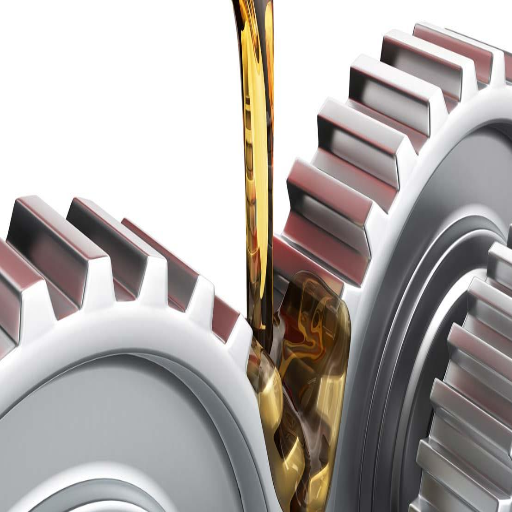
Automotive engines and transmissions
Lubricants have been found necessary in an automobile’s transmissions and engines for friction reduction, wear and tear decrease, and improvement of efficiency. Engine oils are defined by their viscosity grades, from 5 to 30 or 10 to 40, and ensure the movement of fluids between engine parts amid varying temperature conditions. Meanwhile, API classifications like GL 4 and GL 5 were established for gear oils intended for transmissions with high-pressure gear interactions.
- Additive Packages: Incorporation of antifriction additives for example, zinc dialkuli diphosphate or ZDDP, improves sludge removal alongside surface coverting as_DOES_ enzymes and detergents _DO_.
- Viscocity index: For engines of higher performance, lubricants are expected to resist thermal breakdown and oxidative degradation to prevent deposit formation in the components.
- Thermal stability and oxidation resistance: Transmission fluids require excellent shear stability to maintain film strength.
In achieving the performance, increased lifetime of components, consumption of fuel, and in complying with industry rules, automotive systems are able to use lubricants with specific properties tailored for them.
Industrial machinery and equipment
In the context of lubrication of Industrial machineries and equipments, the important aspects of concern are the machine’s load range, state of overheating, and the unique working environment of the equipment. Working with Industrial lubricants of this sort need strict compliance to ensure good performanceal maintenance like durability optimization under hard work conditions.
- Load-carrying ability: For high operating equipment, lubricants that possess extreme pressure (EP) additives, like sulfur-phosphate compounds, are necessary. These allow for the formation of a strong lubricating film which minimizes wear and prevents surface destruction.
- Operating temperature range: The lubricant must sustain viscosity throughout the operational temperature range. Parameters such as a high viscosity index (≈ 150) should enable fluidity at low temperatures and prevent thermal deterioration at high temperatures.
- Film strength and shear stability: Exceptional film strength lubricants are required to reduce component wear in industrial machines. ASTM D445 for kinematic viscosity and ASTM D2893 for oxidation stability are examples of performance benchmarks.
- Contaminant resistance: High detergent and dispersant lubricant properties are required to control deposits of contaminant metallic particles and soot.
Technical requirements such as viscosity index, load-carrying capacity (EP performance), thermal stability (oxidation resistance ratings), and contamination control standards directly dictate lubricant selection. Each factor must align with the machine’s operational and environmental demands to maximize efficiency and system longevity.
Frequently Asked Questions (FAQs)
Q: How do lubricants help reduce friction between two surfaces?
A: Lubricants help reduce friction between two surfaces by forming a thin layer that separates the two surfaces when they come into contact. This lubricant layer minimizes direct contact between surface irregularities, allowing for smoother relative motion and reducing the force that opposes movement. By doing so, lubricants significantly decrease wear and tear on moving parts and improve overall efficiency.
Q: What is the primary function of a lubricant as we might know it?
A: The primary function of a lubricant is to reduce friction between moving parts that come into contact with each other. Lubricants, such as oil and grease, are substances used to reduce friction and wear between surfaces in relative motion. They create a separating film between the surfaces, minimizing direct contact and allowing for smoother movement.
Q: How does lubrication reduce friction in mechanical systems?
A: Lubrication reduces friction in mechanical systems by replacing sliding friction with fluid friction. When a lubricant is applied between two surfaces, it forms a thin film that separates the irregularities present on both surfaces. This separation minimizes direct contact between the surfaces, reducing the resistance to motion. As a result, the force that opposes the relative motion of two surfaces is significantly decreased, leading to smoother operation and less wear.
Q: Can friction increase and decrease in a lubricated system?
A: Yes, friction could both increase and decrease in a lubricated system depending on various factors. While lubricants generally reduce friction, in some cases, excessive lubrication or the wrong type of lubricant can actually increase friction. This can happen when the lubricant layer becomes too thick, causing resistance to motion within the fluid itself. Understanding friction and proper lubrication techniques is crucial for optimizing the performance of mechanical systems.
Q: How do liquid lubricants work to reduce friction between moving parts?
A: Liquid lubricants work to reduce friction between moving parts by creating a fluid film that separates the two surfaces that come into contact. This film fills in the microscopic irregularities present on the surfaces, reducing direct contact and allowing the surfaces to glide more smoothly over each other. The lubricant’s viscosity and ability to maintain a consistent film under pressure are key factors in its effectiveness at reducing friction and wear.
Q: What role does shear play in the function of lubricants?
A: Shear plays a crucial role in the function of lubricants. When two surfaces move relative to each other, the lubricant between them experiences shear stress. The lubricant’s ability to withstand this shear stress while maintaining a protective film is essential for effective lubrication. The shear properties of a lubricant determine how well it can maintain its protective qualities under various operating conditions, directly impacting its ability to reduce friction and wear.
UCTH213-40J-300 with Setscrew(inch)
CNSORDERNO: Normal-duty(2)
TOGN: UCTH213-40J-300
SDI: B-R1/8
SD: 2 1/2
UCTH212-39J-300 with Setscrew(inch)
CNSORDERNO: Normal-duty(2)
TOGN: UCTH212-39J-300
SDI: B-R1/8
SD: 2 7/16
UCTH212-38J-300 with Setscrew(inch)
CNSORDERNO: Normal-duty(2)
TOGN: UCTH212-38J-300
SDI: B-R1/8
SD: 2 3/8
UCTH212-36J-300 with Setscrew(inch)
CNSORDERNO: Normal-duty(2)
TOGN: UCTH212-36J-300
SDI: B-R1/8
SD: 2 1/4
UCTH211-35J-300 with Setscrew(inch)
CNSORDERNO: Normal-duty(2)
TOGN: UCTH211-35J-300
SDI: B-R1/8
SD: 2 3/16
UCTH211-34J-300 with Setscrew(inch)
CNSORDERNO: Normal-duty(2)
TOGN: UCTH211-34J-300
SDI: B-R1/8
SD: 2 1/8












